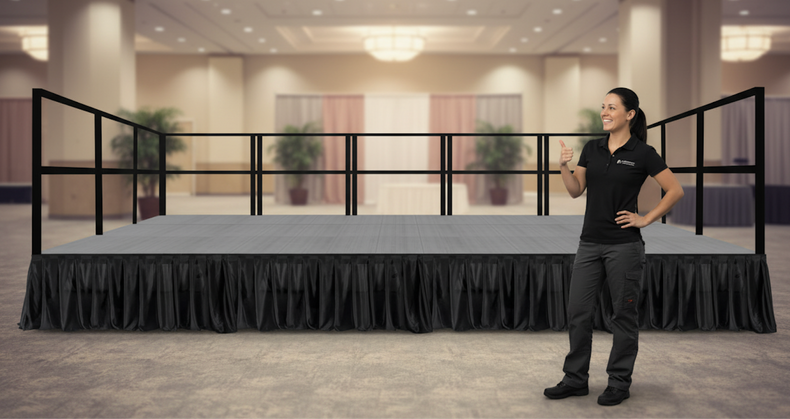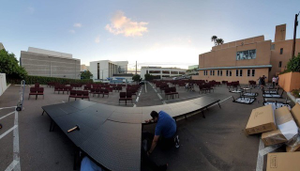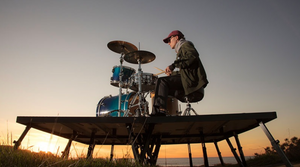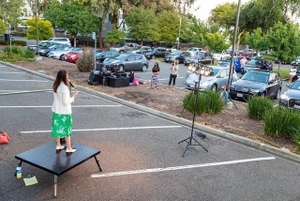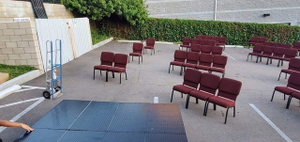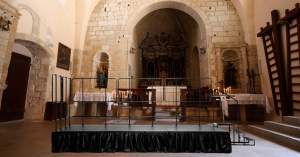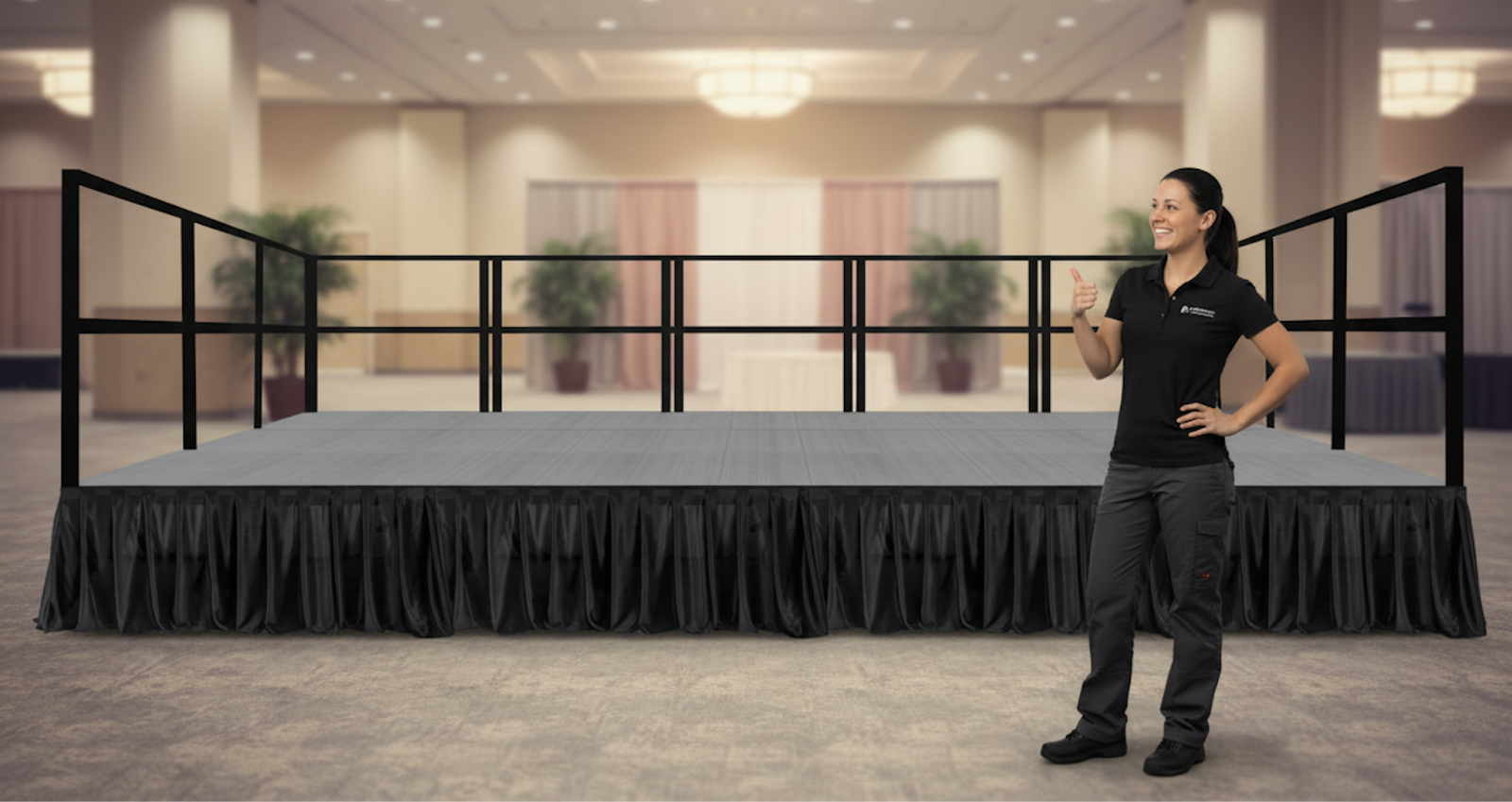
Not every event comes with a big crew of stagehands. For smaller productions, school functions, or traveling performers, the ability to set up a stage solo is invaluable. Portable systems today are engineered with this in mind, giving users fast, safe, and professional results without requiring multiple people.
Key Highlights
- Modern portable stages can be set up by one person in minutes.
- Tool-free locking mechanisms speed up the process safely.
- Compact foldable decks reduce transport challenges.
- Lightweight aluminum keeps strength without bulk.
- Accessories like handrails and carts make solo setups practical.
A performer or organizer can manage their own portable stage setup without stress. The key is using systems that are designed for solo assembly, offering stability while cutting down on setup time.
This isn't just about weight. It's about smart design. Fold-in-half decks with built-in carry straps change everything. When you're hauling gear from van to venue, those few saved minutes and fewer bruised knuckles really add up.
The legs? They're adjustable by hand. No bolts. Just snap and click into position. You want to raise it up for visibility or match uneven ground? You're covered.
And every piece of the setup matters. From the skirt that finishes the look, to the optional rails that keep performers safe, it's all modular and made to connect fast. One deck, then two, then three. Lock it down, level it out, and go.
Why One-Person Setup Matters
For many smaller events, budgets don't allow for large production teams. That's where efficient stage systems come in. If one person can handle setup, it saves money and simplifies logistics. This is especially helpful for schools, community centers, and independent performers.
Not to mention the time crunch. If you've only got an hour before doors open, a five-person build isn't going to happen. But a single-person setup? That's doable. It keeps the pressure low and lets you focus on what actually matters. The show.
Key Features That Enable Solo Setup
Deck Weight and Size: Foldable decks designed for one-person carry make transport simple. Standard sizes like 4x4 can be lifted and positioned by a single user.
Locking Mechanisms: Tool-free locks ensure decks connect securely without needing wrenches or bolts. This reduces both time and error.
Adjustable Legs: Legs that snap into place and adjust quickly allow one person to level the platform, even on uneven surfaces.
Practical Setup Workflow
One-person stage setup follows a clear process: unload the decks, unfold or extend them, lock the legs, and secure connections. With practice, this process can be completed in minutes. Transport carts add efficiency, reducing the strain of moving multiple pieces at once.
One of the most valuable tips is pairing your setup with a strong utility solution like a gator cart, which makes it simple for a single person to move decks, railings, and accessories efficiently.
Real-World Scenarios
Traveling Musicians: Performers often need quick stage setups at venues where no crew is available. One-person systems allow shows to go on without hassle.
Whether it's a coffee shop, school gym, or parking lot show, quick setups mean more time for sound check and less stress on arrival. You control your timing, your layout, and your breakdown.
Schools: Teachers or staff setting up assemblies benefit from lightweight decks that don't require student labor or heavy equipment.
One person can roll in the gear, build the platform, and lock it all together in under 15 minutes. Great for assemblies, talent shows, and even graduation ceremonies.
Community Theaters: Small productions rely on volunteers. Portable one-person stages reduce setup stress and keep schedules on track.
Even in tight backstage areas, the compact footprint of the folded decks makes handling easy. When you're short on crew, that simplicity keeps your rehearsal and performance flow intact.
Safety Considerations
While efficiency is the goal, safety must always come first. Systems should include non-slip decks, load-tested frames, and optional accessories like railings and ramps. These prevent accidents when stages are in use by performers or students. Even when one person is setting up, the platform must remain as safe as any full-scale build.
Organizers who value independence should explore our modular stage platforms, which are built from high-grade materials for tool-free assembly. Everything is designed to click together without tools, but still hold strong under real load. These systems maximize both portability and stability, making solo setups realistic for professionals and amateurs alike.
Final Thoughts
The best stages balance simplicity, safety, and strength. With the right equipment, one person can confidently set up a professional-grade platform that looks polished and performs flawlessly. Portable modular designs, paired with accessories like carts and railings, empower small event organizers and independent performers to deliver big results.
No crew? No problem. When your setup works with you, you stop sweating the build and start focusing on the show.
FAQ
1. How to set up a stage solo?
Use modular decks with folding legs and tool-free locks. Unload your first unit, unfold it flat, and secure the legs. Most snap into place or use quick latches. Once stable, connect your next deck using built-in locking brackets. Work outward one unit at a time, checking leg placement and surface stability as you go. If you're using accessories like skirts or rails, add those after your base is secure. A cart or dolly helps if you're moving multiple decks alone. It's a simple process once you've done it a few times.
2. Are tools required for stage setup?
No. Modern portable systems use tool-free connections, making assembly faster and safer for one person. Everything from the legs to the deck connectors locks or snaps in by hand. You won't need wrenches, screws, or Allen keys, which cuts your setup time and eliminates the risk of missing hardware.
3. Can stages be assembled in minutes?
Yes. With practice, solo setups can be completed in under 10 minutes, depending on stage size. A single 4x4 unit can be unfolded and fully locked in place in about one minute. Add more units, and you're scaling that process with repetition, not complexity. Using carts to move gear and prepping your layout in advance can shave even more time. The real key is consistency. After your second or third time, the whole thing feels automatic.

